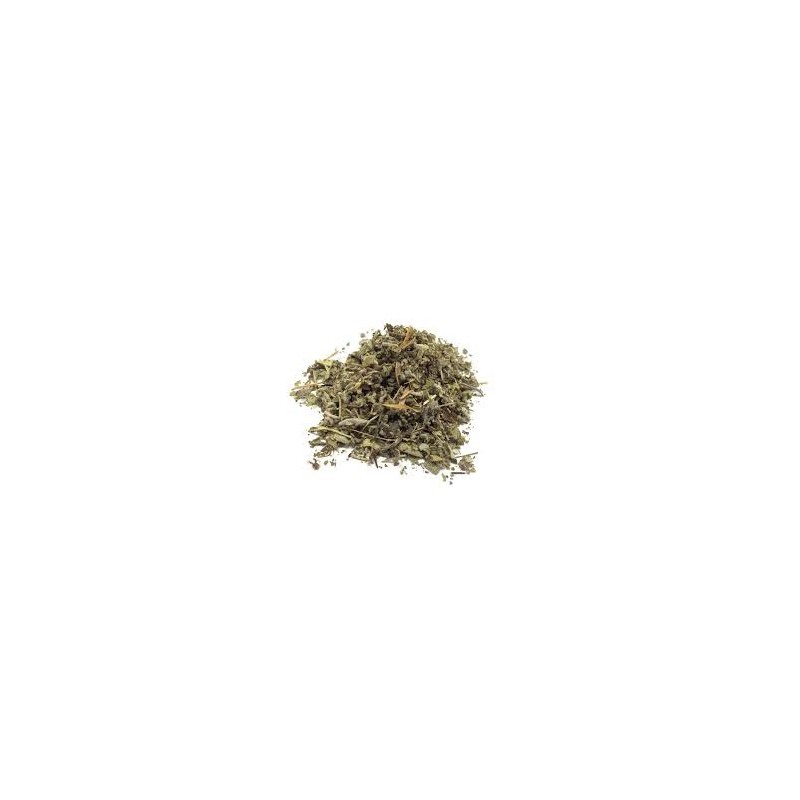
Reference: Catuaba / Erythroxylum catuaba / Trichilia catigua
Banner



Red Sage, also known as Salvia splendens, is a unique ornamental plant that captivates with its intense red color and beautiful flowers. This popular garden plant is renowned not only for its aesthetic appeal but also for its many medicinal properties that have been valued in natural medicine for centuries. Red Sage stands out with its lush growth and intensely red inflorescences, which catch the eye and add vibrancy to any garden. Its flowers form a cascade of saturated color, attracting butterflies, bees, and other pollinating insects, contributing to the ecological balance in the garden.
However, Red Sage is not just an ornamental plant. In natural medicine, its leaves and flowers are utilized for their medicinal properties. They contain phenolic compounds, flavonoids, and antioxidants, which exhibit anti-inflammatory and antibacterial effects.
Red Sage is used to alleviate throat discomfort, such as sore throat and inflammation. Its leaf infusions can be used as gargles, reducing irritation and providing relief.
 Security policy
Security policy
(edit with the Customer Reassurance module)
 Delivery policy
Delivery policy
(edit with the Customer Reassurance module)
 Return policy
Return policy
(edit with the Customer Reassurance module)
 Other names for Red Sage include:
Other names for Red Sage include:
 1. What is Red Sage ?
1. What is Red Sage ?
Red Sage refers to the plant species Salvia miltiorrhiza, which is commonly used in natural medicine, particularly in traditional Chinese medicine. This plant has red roots that are rich in active compounds such as tanshinones and salvianolic acid. Red Sage exhibits numerous beneficial properties, including anti-inflammatory, antioxidant, and neuroprotective effects. It is used in the treatment of heart diseases such as hypertension and coronary artery disease, as it may help dilate blood vessels and reduce cholesterol levels. Red Sage may also assist in alleviating symptoms of neurological conditions, such as Parkinson's disease, due to its neuroprotective properties.
 2. What are the active ingredients of Red Sage ?
2. What are the active ingredients of Red Sage ?
Red Sage (Salvia miltiorrhiza) is a plant whose roots contain several active compounds, including tanshinones and salvianolic acid. Tanshinones are a group of chemical compounds that exhibit anti-inflammatory, antibacterial, anticancer, and antioxidant effects. Among these compounds, tanshinone IIA and cryptotanshinone are considered the most important active ingredients of Red Sage. Salvianolic acid, also known as dihydroxyphenyl lactic acid, is another chemical compound present in Red Sage. It possesses anti-inflammatory, antiviral, and antioxidant properties. Salvianolic acid may also have an impact on the circulatory system by assisting in vasodilation and reducing the risk of heart diseases. Additionally, Red Sage contains other compounds such as flavonoids, sterols, fatty acids, and alkaloids, which can have a positive impact on human health. These active ingredients are responsible for many of the applications of Red Sage in natural medicine, including the treatment of heart diseases, neurological disorders, and other ailments. However, it is important to note that before using Red Sage for medicinal purposes, it is advisable to consult with a healthcare professional or pharmacist for proper dosage guidance and potential interactions with other medications.
 3. What are the uses of Red Sage in natural medicine ?
3. What are the uses of Red Sage in natural medicine ?
Red Sage, also known as Salvia miltiorrhiza, has a long history of use in natural medicine. Its roots contain several active compounds that possess medicinal and anti-inflammatory properties. In Chinese medicine, Red Sage has been used for over 2,000 years to treat various ailments. Currently, with the help of scientific research, we have gained more knowledge about its potential applications in the treatment of different diseases:
![]() 4. What scientific research has been conducted on Red Sage ?
4. What scientific research has been conducted on Red Sage ?
Scientific research on Red Sage, also known as Salvia miltiorrhiza, has been conducted for many years, and the findings suggest potential health benefits of this plant. Here are some key scientific studies on Red Sage:
The conclusions drawn from these studies suggest potential applications of Red Sage in natural medicine.
 5. Is Red Sage safe to use ?
5. Is Red Sage safe to use ?
Red Sage, also known as Salvia miltiorrhiza, has been used in traditional and alternative medicine for centuries. Many scientific studies confirm its positive impact on health, but it is important to follow recommendations for safe use. For short-term use, Red Sage is considered safe. However, individuals with allergies to plants in the mint family, to which Red Sage belongs, should avoid its use.
Long-term use of Red Sage may cause adverse effects such as headaches, nausea, digestive disturbances, and allergic reactions. Therefore, prolonged use of Red Sage should be done under the supervision of a doctor or specialist.
Pregnant and breastfeeding women should avoid the use of Red Sage due to insufficient research to confirm its safety for these groups.
 6. What are the interactions between Red Sage and medications ?
6. What are the interactions between Red Sage and medications ?
Red Sage, or Salvia miltiorrhiza, is used in natural and alternative medicine for its positive impact on health. However, like many other herbs, it may interact with certain medications. Research has shown that Red Sage may influence the metabolism of drugs in the body, leading to changes in their blood concentrations. Specifically, Red Sage may increase the concentration of drugs metabolized by liver enzymes CYP3A4 and CYP2C19, such as certain pain relievers, antihistamines, and anticoagulants.
Additionally, Red Sage may also interact with the effects of certain medications, such as antihypertensives, anticoagulants, and antidepressants. Individuals taking these medications should consult with a doctor before starting Red Sage supplementation to avoid unwanted interactions.
 7. How to use Red Sage ?
7. How to use Red Sage ?
Red Sage, or Salvia miltiorrhiza, can be used in natural and alternative medicine in the form of dietary supplements, tea, or herbal extracts. The method of use may vary depending on the form. Red Sage dietary supplements are available in the form of capsules, tablets, or powder. Typically, a daily dosage of 200 to 600 mg is recommended. This dose should be divided into two or three servings and taken with meals. It is important not to exceed the recommended dosage.
Red Sage tea is easy to prepare and can be used as a daily beverage. To prepare the tea, steep one teaspoon of dried Red Sage in boiling water and let it steep for about 10 minutes. The tea can be consumed 2-3 times a day. Herbal extracts of Red Sage are available in liquid form or as tinctures. Typically, a dosage of 1-2 ml of liquid or 30-60 drops, dissolved in a small amount of water, is recommended. Extracts can be used once or twice a day.
When using Red Sage, it is important to adhere to dosage recommendations and methods of use.
 8. Can Red Sage help in the treatment of heart diseases ?
8. Can Red Sage help in the treatment of heart diseases ?
Red Sage, or Salvia miltiorrhiza, is a plant that has been used in Chinese medicine for centuries to improve cardiovascular health. In recent years, numerous scientific studies have confirmed the potential benefits of Red Sage in the treatment of heart diseases. Red Sage contains several compounds with health-promoting properties, including flavonoids, caffeic acid, rosmarinic acid, and diterpenes. As a result, it exhibits anti-inflammatory, antioxidant, and vasodilatory effects, which can contribute to reducing the risk of cardiovascular diseases.
Studies have shown that Red Sage may help improve blood flow through blood vessels and reduce the risk of blood clots and strokes. Additionally, Red Sage exhibits antioxidant activity, meaning it can help protect cells from damage caused by free radicals.
Red Sage may also assist in lowering cholesterol and triglyceride levels in the blood, which is important for cardiovascular disease prevention. One study demonstrated that Red Sage supplementation in individuals with hypertension helped reduce blood pressure and improve the condition of blood vessels.
These findings suggest that Red Sage may be beneficial in the treatment of heart diseases and improvement of cardiovascular function.
 SCIENTIFIC RESEARCH has been conducted by:
SCIENTIFIC RESEARCH has been conducted by:
 STORAGE
STORAGE
Proper storage of Red Sage is crucial to maintain its effectiveness and quality. Below are a few guidelines for storing Red Sage:
Storing Red Sage according to these guidelines will help preserve its active ingredients and effectiveness for a long time. However, before using Red Sage, it is always recommended to check the expiration date on the packaging and ensure that the product is not expired.
 SCIENTIFIC SOURCES
SCIENTIFIC SOURCES

Thank you for your interest in our herbal website! We appreciate your recognition of our work and effort put into creating valuable content. If you would like to share our information on your website, we encourage you to do so. However, please respect our copyrights and do not copy the content without our permission.
If you wish to share our website, you can always provide a link leading to our page. This will not only help maintain the integrity of our work but also allow your readers to discover more valuable information about herbs.
Thank you for your understanding and support! If you have any questions or need additional information, feel free to contact us.
Reference: Catuaba / Erythroxylum catuaba / Trichilia catigua
Reference: Hawthorn
Reference: barley
Reference: Indian gooseberry / Amla
Reference: Acai berries
Reference: Ashwagandha
Reference: myosotis
Reference: Hawthorn (Crataegus L.)
Your review appreciation cannot be sent
Report comment
Report sent
Your report cannot be sent
Write your review
Review sent
Your review cannot be sent

Red Sage, also known as Salvia splendens, is a unique ornamental plant that captivates with its intense red color and beautiful flowers. This popular garden plant is renowned not only for its aesthetic appeal but also for its many medicinal properties that have been valued in natural medicine for centuries. Red Sage stands out with its lush growth and intensely red inflorescences, which catch the eye and add vibrancy to any garden. Its flowers form a cascade of saturated color, attracting butterflies, bees, and other pollinating insects, contributing to the ecological balance in the garden.
However, Red Sage is not just an ornamental plant. In natural medicine, its leaves and flowers are utilized for their medicinal properties. They contain phenolic compounds, flavonoids, and antioxidants, which exhibit anti-inflammatory and antibacterial effects.
Red Sage is used to alleviate throat discomfort, such as sore throat and inflammation. Its leaf infusions can be used as gargles, reducing irritation and providing relief.